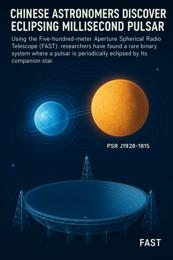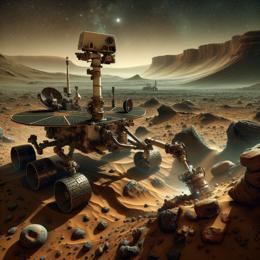Image created by AI
NASA Scientists Uncover Potential Fastest-Traveling Exoplanet in the Milky Way
In a groundbreaking discovery led by postdoctoral researcher Sean Terry from the University of Maryland, College Park, and NASA’s Goddard Space Flight Center, astronomers have potentially identified the swiftest exoplanet system known to date. Racing through the center of our Milky Way at speeds nearing 1.2 million miles per hour (approximately 540 kilometers per second), this system could set a new benchmark for cosmic speed.
Published on February 10 in The Astronomical Journal, the findings began with data sourced from a 2011 study that utilized MOA (Microlensing Observations in Astrophysics) project’s technology at New Zealand's University of Canterbury Mount John Observatory. Through a microlensing technique, scientists were able to identify two objects gravitationally bound but differing massively in mass. The challenge was determining whether this pair was a star and planet duo or a rogue planet with a smaller moon.
Dr. David Bennett, a senior research scientist at NASA Goddard, explained that while establishing mass ratio was straightforward, actual mass calculation proved more complex due to the unknown distance from Earth to the objects. The team's most recent investigation hints that they likely found a hypervelocity star accompanied by a super-Neptune-like planet.
The star's projected path suggests speeds potentially surpassing the Milky Way’s escape velocity — making it one of the galaxy’s fastest entities. The system's exact dynamics remain partially confirmed, and astronomers hope to solidify their understanding with further observations using advanced telescopes.
An exciting aspect is the anticipated role of NASA’s upcoming Nancy Grace Roman Space Telescope, expected to enhance the detection of such swift-moving planetary systems. With its high-resolution capabilities, the Roman Space Telescope could observe broad swathes of the galactic bulge, significantly improving upon the labor-intensive, multiple-telescope method currently needed for such discoveries.
This promising discovery provides not only insights into the dynamics of hypervelocity stars but also raises fascinating questions about the formation and evolution of planetary systems under extreme conditions. As research continues, this system might offer unprecedented insights into the complexities of our galaxy and beyond.










